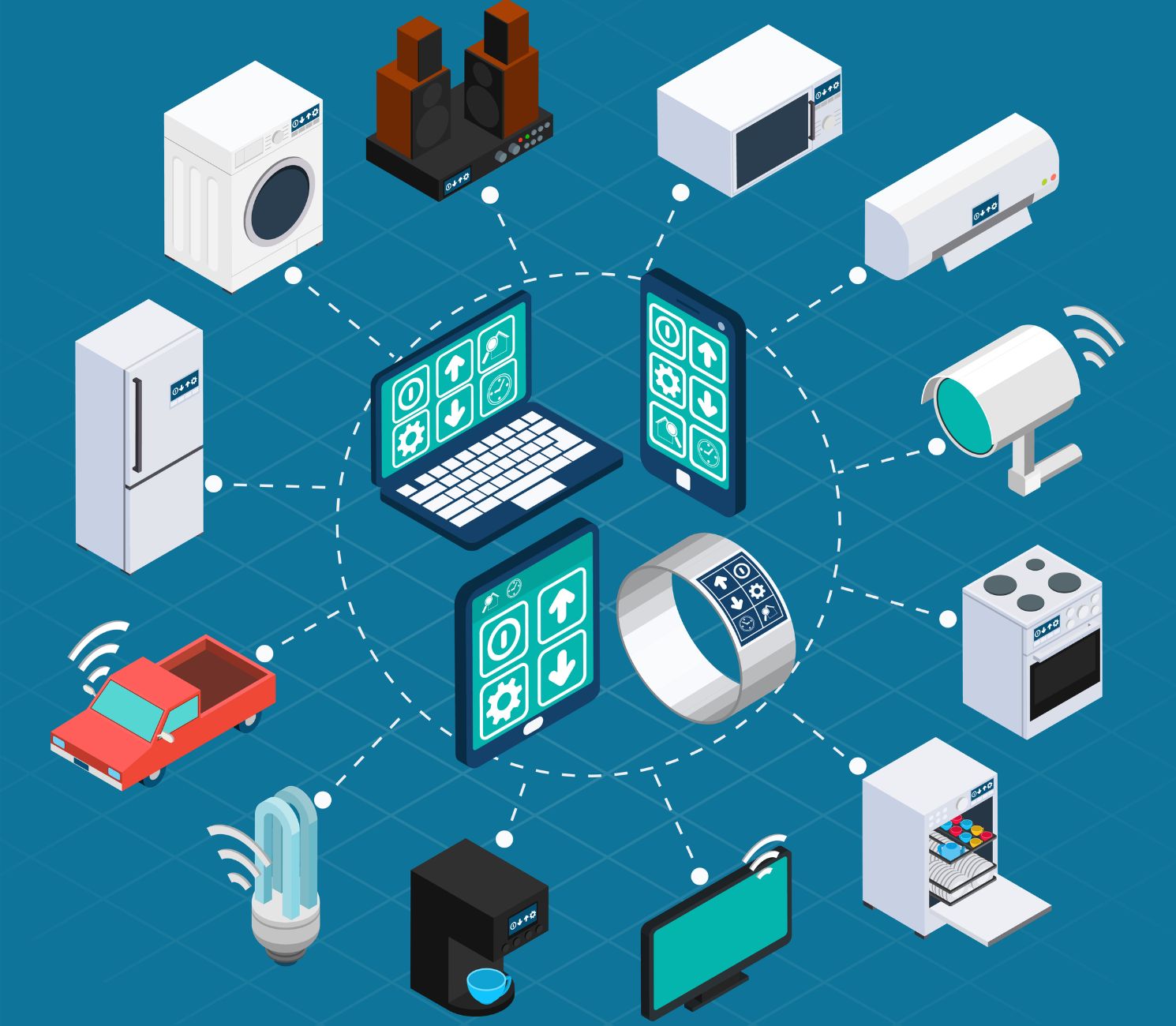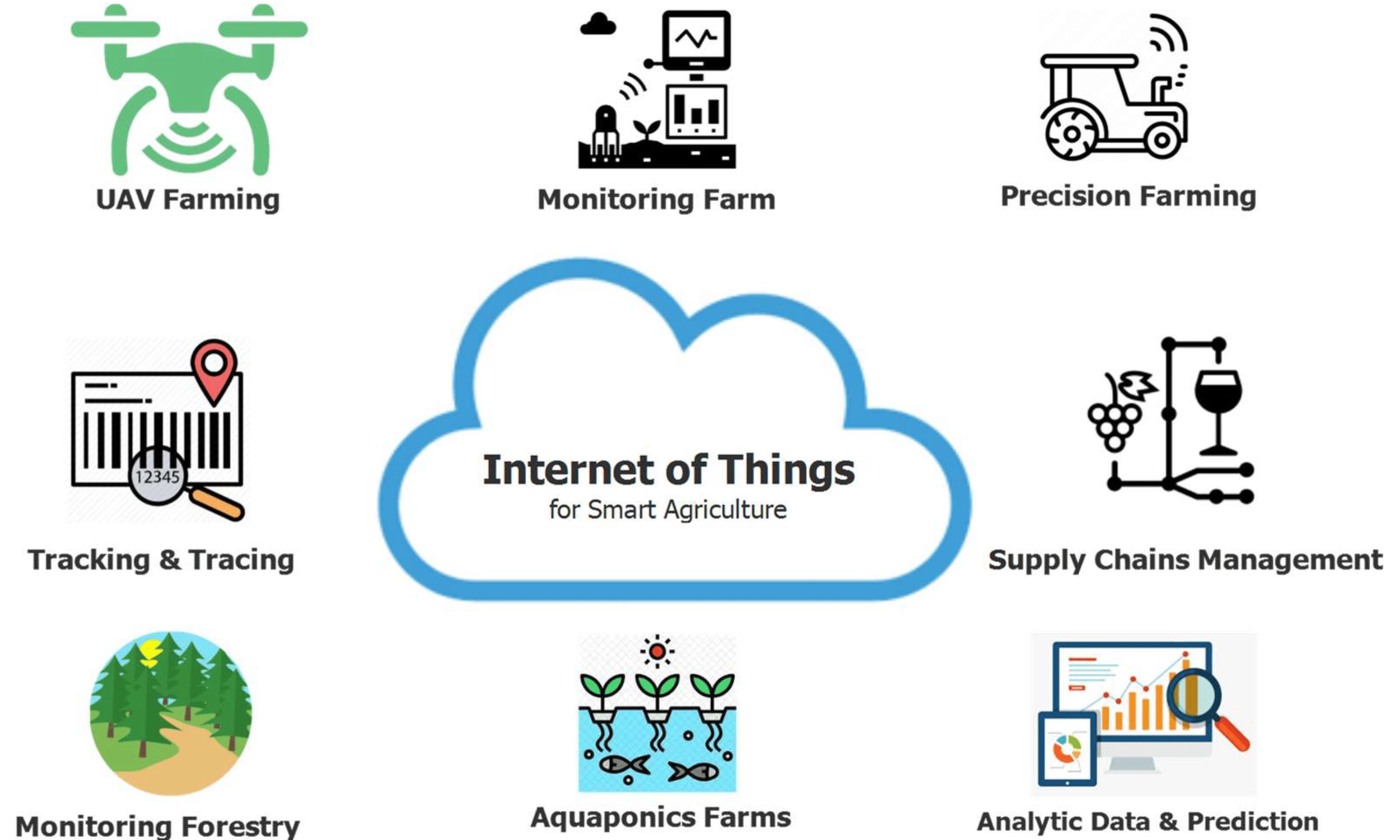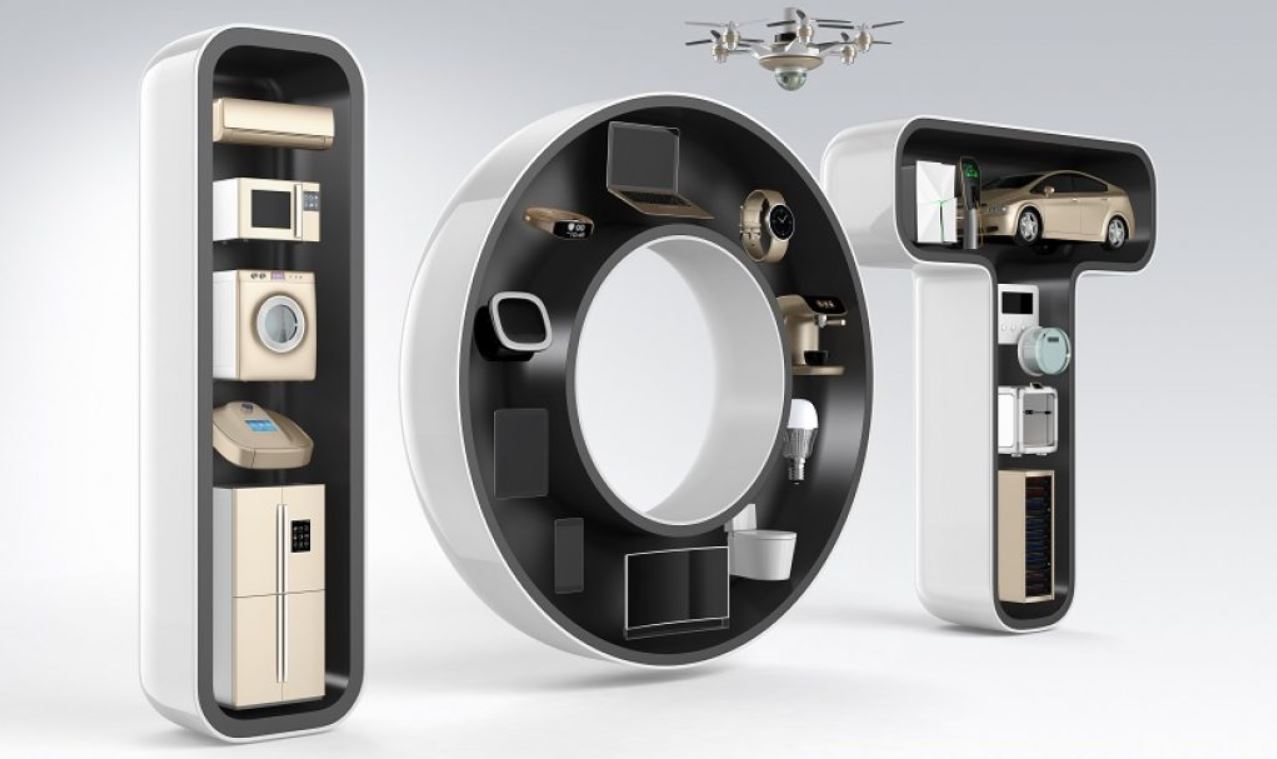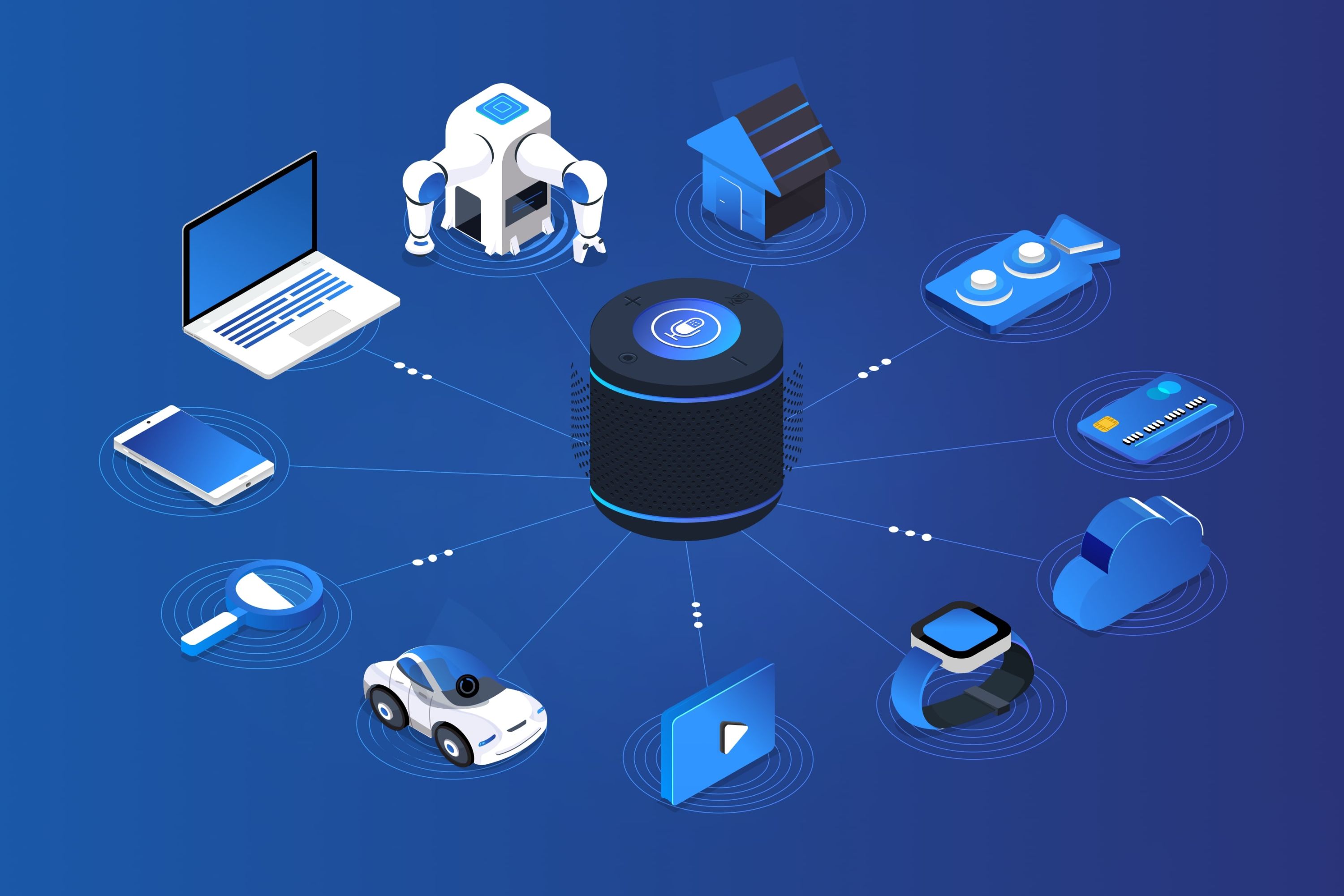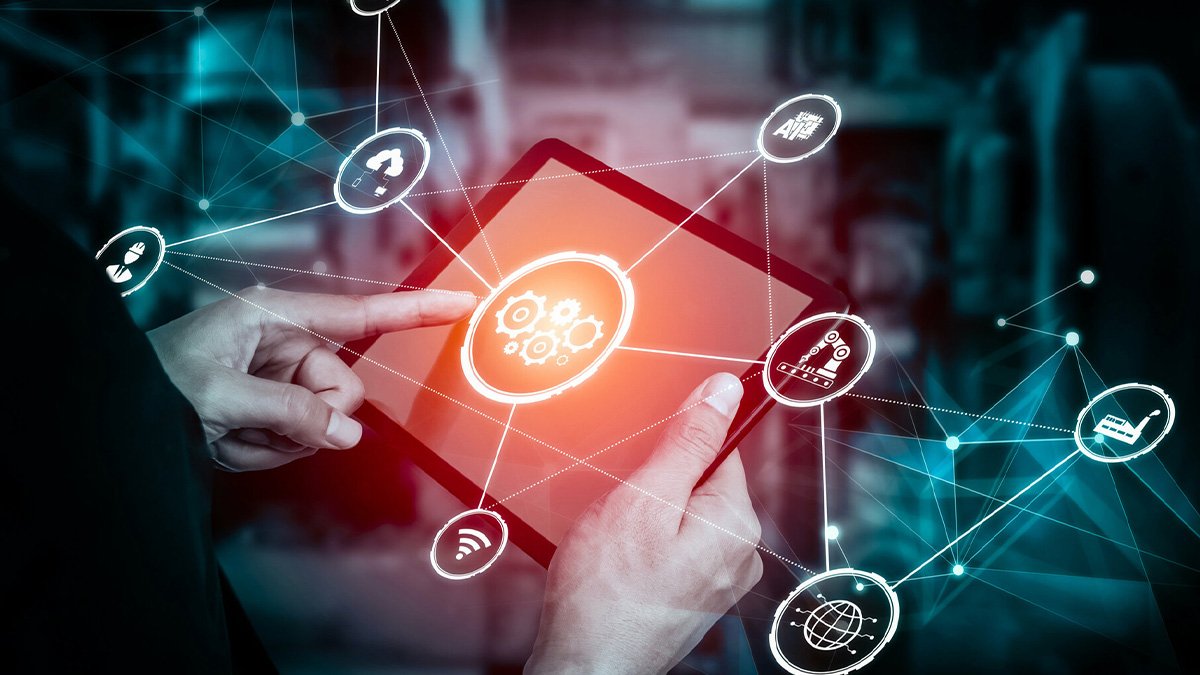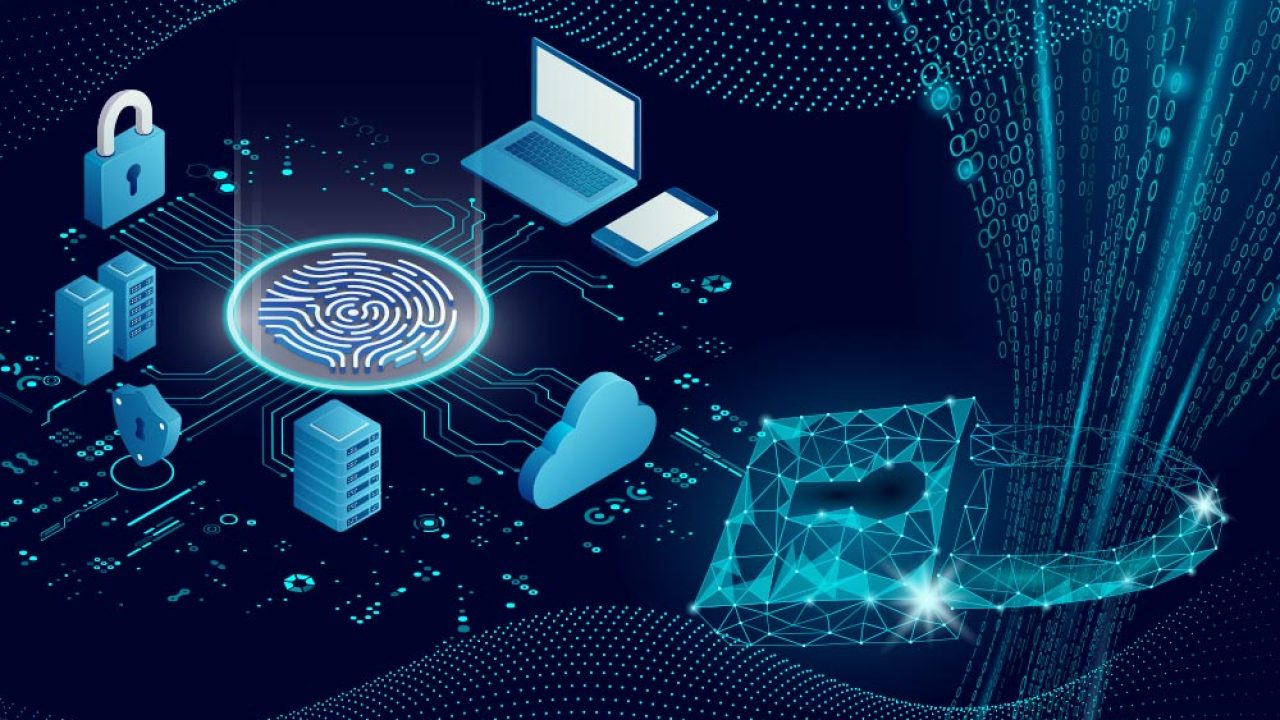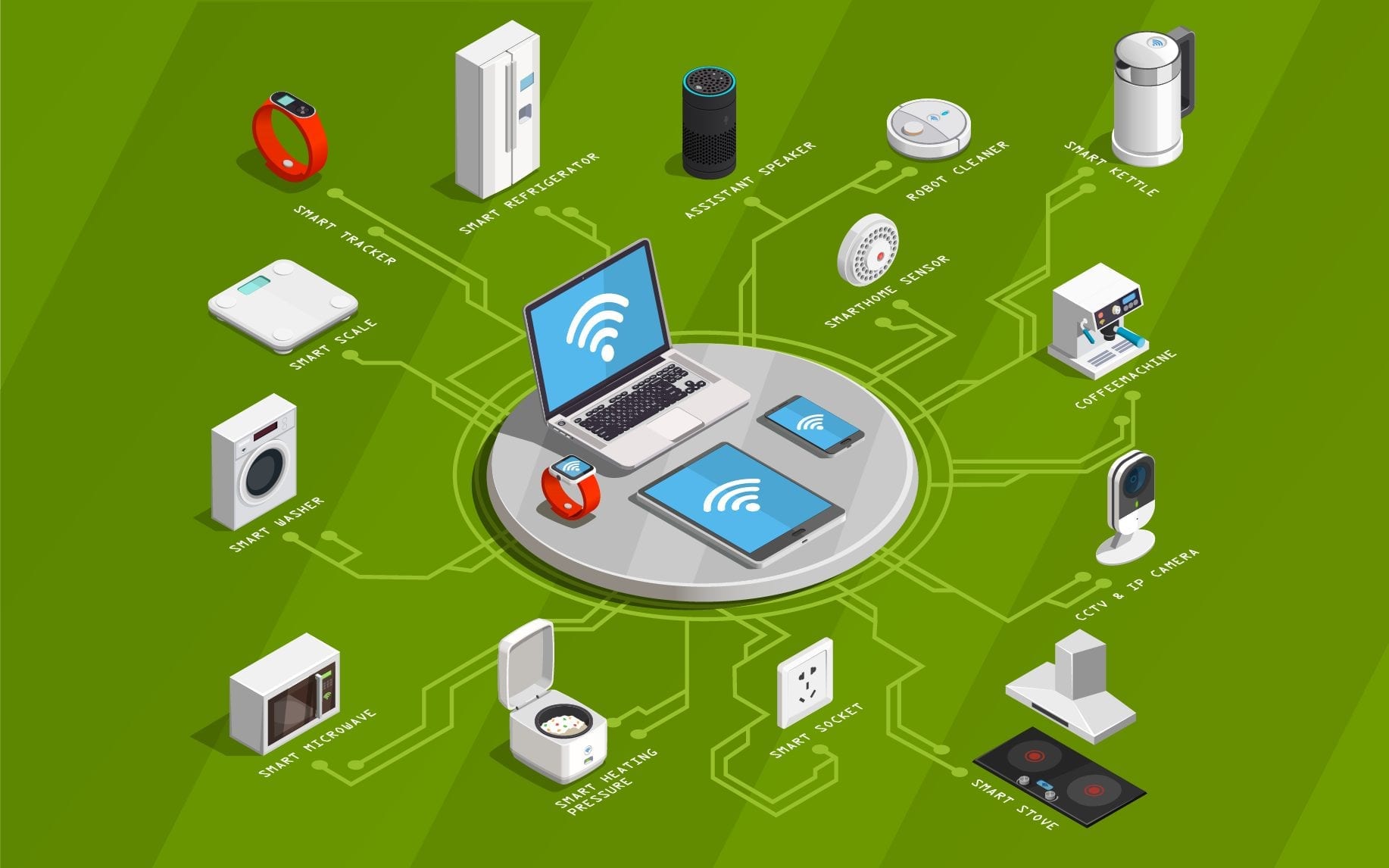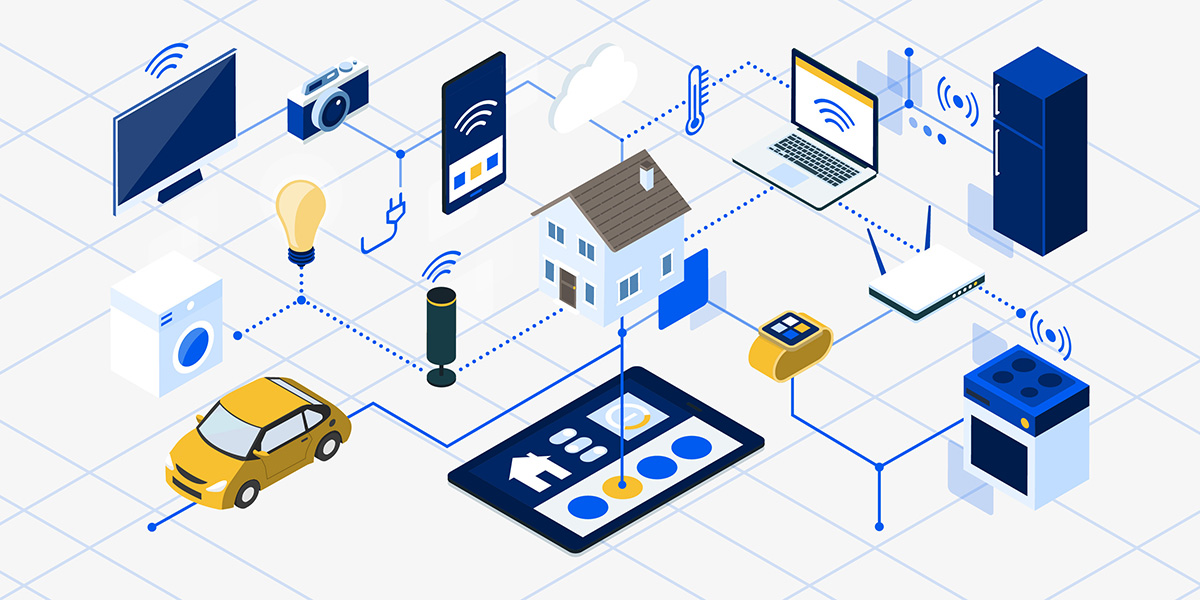Introduction
The Internet of Things (IoT) has emerged as a game-changer in the technology landscape, revolutionizing the way we live, work, and interact with the world around us. With the rapid advancement of interconnected devices, the IoT has the potential to transform our daily lives in ways we could have never imagined.
At its core, the Internet of Things refers to the network of physical objects embedded with sensors, software, and connectivity, enabling them to collect and exchange data. These objects can range from everyday devices like smartphones, smart home appliances, and wearables to more complex systems like industrial machinery and smart city infrastructure.
The IoT has the power to reshape various aspects of our lives, from the way we manage our homes to how we receive healthcare, commute, and work. This article delves into the different ways the Internet of Things will influence our daily routines, exploring its impact on our homes, healthcare, transportation, agriculture, workplaces, energy management, and security concerns.
As we explore the exciting potential of the IoT, it is important to address the challenges and implications that arise with this technological revolution. Security concerns, privacy issues, and the need for standardized protocols are just a few of the challenges that must be overcome to harness the full benefits of the IoT.
By analyzing the impact of the Internet of Things on various sectors of society, we gain a deeper understanding of how this technology will change our lives. From increased convenience and efficiency to improved safety and sustainability, the IoT holds the promise of transforming our daily routines and enhancing our quality of life. So, let us dive into this transformative journey and explore the future that awaits us in the interconnected world of the Internet of Things.
What is the Internet of Things (IoT)?
The Internet of Things (IoT) is a technological revolution that encompasses a vast network of connected devices, enabling them to communicate and share data with each other. This interconnected network goes beyond traditional internet connections between computers and smartphones, extending its reach to everyday objects.
Essentially, the IoT is the integration of physical objects (often referred to as “smart” devices) with internet connectivity, sensors, and software. These objects can include a wide range of devices, such as wearable fitness trackers, smart appliances, environmental sensors, industrial machinery, and even vehicles. These devices are equipped with the ability to collect and transmit data, ultimately creating an ecosystem of interconnected devices.
So, how does the IoT work? It starts with sensors embedded in various objects or environments, which collect real-time data. This data is then transmitted through wired or wireless connections to a central system, where it is processed, analyzed, and used to generate valuable insights or trigger specific actions. These actions can be as simple as adjusting the temperature of a room based on occupancy or as complex as alerting emergency services in the event of a fire.
The potential applications of the IoT are immense. Imagine a world where your smart refrigerator can automatically order groceries when you’re running low, or a city where transportation systems efficiently manage traffic based on real-time data from connected vehicles. The IoT has already made significant strides in areas like smart homes, healthcare, agriculture, manufacturing, and transportation.
It is important to note that the IoT is not limited to consumer devices or smart homes. It has far-reaching implications for industries and governments as well. From optimizing supply chains and improving energy management to enhancing public safety and enabling smart cities, the IoT is transforming the way organizations operate and interact with the world around them.
Overall, the Internet of Things has the power to create a more connected and intelligent world. As more devices become connected, the sheer volume of data generated will continue to increase, providing unprecedented opportunities for innovation and optimization. However, as with any transformative technology, there are challenges to address, including privacy concerns, security risks, and ethical considerations. These challenges must be met with responsible and innovative solutions to ensure the full realization of the IoT’s potential.
How IoT will change our homes
The Internet of Things (IoT) is set to revolutionize our homes, making them smarter, more connected, and efficient. With an array of smart devices and appliances, homeowners will experience a new level of convenience, comfort, and control over their living spaces.
One of the most notable changes that IoT will bring to our homes is the emergence of smart home automation. With IoT-enabled devices such as smart thermostats, lighting systems, and security cameras, homeowners can remotely control and monitor various aspects of their homes through smartphone apps or voice assistants.
For example, with a smart thermostat, homeowners can adjust the temperature of their homes from anywhere, ensuring optimal comfort and energy efficiency. Smart lighting systems allow users to customize lighting preferences, set schedules, and even change the ambiance with a simple voice command.
Security is another area that will greatly benefit from IoT technologies. Connected security systems with smart cameras and sensors enable homeowners to monitor their homes and receive real-time notifications of any unusual activities or breaches. This not only enhances the safety of the home but also provides peace of mind, especially when homeowners are away.
In addition to convenience and security, IoT will also transform the way we manage household chores. Smart appliances such as refrigerators, washing machines, and ovens can be connected to the internet, allowing for remote monitoring and control. Imagine receiving a notification when you’re running low on groceries or being able to preheat your oven while you’re on your way home. These features not only save time but also enable better control over energy consumption.
Furthermore, IoT will enhance home entertainment experiences. Smart TVs, gaming consoles, and audio systems can be seamlessly integrated, creating immersive multimedia experiences. Users can access their favorite streaming platforms, control audio settings, and even synchronize lighting effects for a truly immersive home theater experience.
IoT will also have a significant impact on energy efficiency and sustainability in our homes. Smart thermostats and energy monitoring systems can intelligently regulate energy usage based on occupancy, preferences, and weather conditions. By optimizing heating, cooling, and lighting, homeowners can reduce energy waste and lower utility bills.
While the benefits of IoT in our homes are vast, there are also considerations that need to be addressed. Privacy concerns, data security, and interoperability among different devices and platforms are some of the challenges that need to be overcome to ensure a seamless and secure smart home experience.
As IoT continues to evolve, our homes will become more interconnected and intelligent, providing us with greater control, convenience, and efficiency. The future of smart homes is within reach, and IoT is the key to unlocking this transformative experience.
The impact of IoT on healthcare
The healthcare industry is undergoing a profound transformation with the integration of Internet of Things (IoT) technologies. IoT has the potential to improve patient care, enhance operational efficiency, and revolutionize the way healthcare providers deliver services.
One of the significant areas where IoT is making a significant impact is in remote patient monitoring. With the help of wearable devices and sensors, healthcare professionals can monitor patients’ vital signs, activity levels, and other health-related data in real-time. This enables early detection of potential health issues, facilitates timely interventions, and allows patients to receive personalized care from the comfort of their homes.
IoT also plays a crucial role in improving medication management. Smart pill dispensers equipped with IoT technology can remind patients to take their medications at the right time, and even send notifications to caregivers or healthcare providers if a dose is missed. This not only enhances medication adherence but also helps prevent potential complications and hospital readmissions.
Another area where IoT is transforming healthcare is in the optimization of hospital operations. IoT-enabled devices and systems, such as asset tracking tags and smart beds, help healthcare facilities streamline workflows, improve patient flow, and enhance asset management. This leads to more efficient resource allocation, reduced wait times, and improved overall patient experience.
Emergency response systems also benefit from IoT advancements. Connected devices and sensors can automatically alert healthcare providers or emergency services in case of critical situations, such as falls or cardiac events. This enables rapid response and timely medical interventions, potentially saving lives in emergency situations.
IoT is also revolutionizing diagnostic and treatment procedures. Medical equipment and devices equipped with IoT sensors can collect and transmit real-time data, allowing healthcare providers to remotely monitor patients, make accurate diagnoses, and adjust treatment plans accordingly. This not only improves the quality of care but also reduces the need for frequent hospital visits, particularly for patients with chronic conditions.
While the potential of IoT in healthcare is significant, it is important to address certain challenges. Data security and privacy concerns are paramount, as the vast amount of sensitive patient information requires robust protection and compliance with privacy regulations. Interoperability among different devices and platforms is another key consideration to ensure seamless integration and data exchange between healthcare systems.
Overall, IoT has the potential to revolutionize healthcare by improving patient outcomes, enhancing operational efficiency, and transforming the way healthcare services are delivered. As IoT continues to evolve and new technologies emerge, the healthcare industry can harness its full potential to provide more personalized, efficient, and accessible care to patients around the world.
IoT and transportation
The Internet of Things (IoT) is reshaping the transportation industry, revolutionizing the way we travel, commute, and manage logistics. By integrating IoT technologies into vehicles, infrastructure, and logistics systems, transportation is becoming smarter, safer, and more efficient.
One of the key areas where IoT is transforming transportation is in intelligent traffic management. IoT-enabled sensors and connected traffic lights can collect real-time data on traffic flow, congestion, and road conditions. This information can be used to optimize traffic signal timing, dynamically reroute drivers to less congested routes, and provide motorists with real-time updates to avoid accidents or roadblocks. As a result, IoT helps to reduce travel time, ease traffic congestion, and improve overall road safety.
In the realm of public transportation, IoT plays a significant role in enhancing the commuter experience. Connected buses, trains, and trams can provide real-time information on arrival times, crowdedness, and route changes, allowing passengers to plan their journeys more efficiently. Integrated payment systems, such as contactless payment cards or mobile apps, enable seamless and convenient transactions, eliminating the need for physical tickets or exact change.
The logistics and supply chain industry also benefits greatly from IoT technologies. IoT-enabled tracking devices and sensors enable real-time visibility of shipments, providing accurate information on location, temperature, humidity, and other conditions. This improves inventory management, reduces the risk of theft or loss, and enhances overall supply chain efficiency. In addition, smart warehouses equipped with IoT technologies can automate inventory management, optimize resource allocation, and streamline order fulfillment, leading to cost savings and faster delivery times.
IoT is also transforming the automotive industry with the emergence of connected cars. Vehicles equipped with IoT sensors and communication technologies can collect and transmit data on performance, maintenance needs, and driver behavior. This data can be utilized to optimize vehicle diagnostics, prevent breakdowns, and enhance driver safety. Additionally, connected cars can access real-time traffic and weather information, provide navigation assistance, and offer in-vehicle entertainment and connectivity features.
However, as with any technology, there are challenges that come with the implementation of IoT in transportation. Data security and privacy concerns need to be addressed to protect sensitive information transmitted between connected vehicles and infrastructure systems. Interoperability among different IoT systems is crucial to ensure seamless integration and communication across various transportation platforms.
Overall, IoT is transforming the transportation industry by improving traffic management, enhancing the commuter experience, optimizing logistics and supply chain operations, and revolutionizing the automotive sector. As IoT continues to advance, the transportation landscape will become more connected, efficient, and sustainable, offering unprecedented benefits for individuals, businesses, and society at large.
The role of IoT in agriculture
The Internet of Things (IoT) is revolutionizing the agricultural industry, transforming traditional farming practices into more efficient, sustainable, and data-driven processes. By harnessing IoT technologies, farmers can monitor and manage their crops, livestock, and resources with greater precision, leading to increased productivity and reduced environmental impact.
One of the key applications of IoT in agriculture is precision farming. IoT sensors and connected devices can collect valuable data on soil moisture, temperature, humidity, and nutrient levels. Farmers can access this data in real-time, allowing them to make data-driven decisions on irrigation, fertilization, and pest control. By applying resources precisely when and where they are needed, farmers can optimize crop yields, conserve water and other resources, and minimize the use of chemicals.
In animal agriculture, IoT plays a crucial role in livestock monitoring and management. Wearable sensors and smart collars can collect data on animal health, behavior, and activity levels. This enables farmers to detect signs of illness or distress early on, intervene in a timely manner, and improve animal welfare. Additionally, connected feeding systems can provide automated and customized feeding schedules, ensuring that animals receive optimal nutrition.
The use of IoT in agriculture extends beyond the field and livestock management. Supply chain and logistics are also benefiting from IoT integration. Connected sensors and trackers can monitor the condition of perishable goods during transportation, ensuring that temperature and humidity levels are maintained within optimal ranges. This reduces the risk of spoilage and ensures that consumers receive high-quality, fresh produce.
Furthermore, IoT has brought advancements in smart farming equipment. Connected machinery and autonomous vehicles equipped with sensors and GPS technologies enable precise and efficient operations. This includes automated planting, crop spraying, and harvesting, reducing labor costs and improving overall farm productivity.
IoT also offers valuable insights through analytics and data analytics in agriculture. By collecting and analyzing large volumes of data from multiple sources, farmers can gain valuable insights into crop and livestock performance, weather patterns, market trends, and more. This information can help farmers make informed decisions, improve resource allocation, and optimize production strategies.
While the benefits of IoT in agriculture are substantial, there are challenges to consider. Farmers must ensure the security and privacy of data collected by IoT devices to protect sensitive information. The interoperability of IoT systems is also crucial for the seamless integration of different devices and platforms.
With the integration of IoT technologies, agriculture is entering a new era of smart farming, where data-driven decisions, precision management, and sustainable practices are at the forefront. By leveraging the power of IoT, farmers can optimize their operations, increase productivity, reduce environmental impact, and contribute to a more sustainable food system.
IoT and the workplace
The Internet of Things (IoT) is transforming the way we work, bringing unprecedented connectivity, automation, and efficiency to the workplace. From smart offices to industrial settings, IoT technologies are revolutionizing operations, enhancing safety, and improving productivity.
One of the significant impacts of IoT in the workplace is the concept of the smart office. IoT-enabled devices, such as smart lighting, thermostats, and occupancy sensors, can optimize energy usage and create a comfortable working environment. These devices can automatically adjust lighting levels, temperature, and ventilation based on occupancy and preferences, reducing energy waste and improving employee comfort.
IoT also enhances workplace safety through connected sensors and monitoring systems. For example, wearable devices with IoT capabilities can monitor employee health and safety in hazardous environments, sending real-time alerts or triggering emergency response protocols in case of accidents or health risks. Additionally, IoT sensors can detect potential risks, such as gas leaks or equipment malfunctions, enabling proactive maintenance and minimizing the chances of accidents or disruption.
In the realm of manufacturing and industrial settings, IoT is revolutionizing operations through the concept of the Industrial Internet of Things (IIoT). Connected sensors embedded in machinery and equipment can monitor performance, optimize maintenance schedules, and detect potential issues before they become critical. This results in improved operational efficiency, reduced downtime, and proactive equipment management.
Efficient inventory management is another area where IoT is transforming the workplace. Connected sensors and RFID technology enable real-time tracking of inventory levels, ensuring accurate stock control and efficient supply chain management. This minimizes stockouts, improves order fulfillment, and reduces inventory holding costs.
IoT also enhances collaboration and communication in the workplace. Connected devices, such as smart whiteboards or video conferencing systems, enable seamless interaction and information sharing among colleagues, regardless of their physical location. This promotes teamwork, streamlines decision-making processes, and facilitates remote work opportunities.
However, alongside the benefits, IoT in the workplace also presents challenges. Data security and privacy are critical considerations, as the vast amount of sensitive information collected and transmitted by IoT devices requires robust protection. Interoperability among different IoT systems is also a key concern to ensure seamless integration and communication between devices and platforms.
Overall, IoT is reshaping the workplace, creating a more connected, efficient, and productive environment. By leveraging IoT technologies, businesses can optimize operations, enhance workplace safety, improve collaboration, and drive innovation. As IoT continues to evolve, the workplace of the future holds the potential for even greater transformation and advancements.
IoT and energy management
The Internet of Things (IoT) is driving significant advancements in energy management, offering new opportunities to monitor, optimize, and conserve energy resources. By integrating IoT technologies into energy systems, businesses, and individuals can make smarter decisions, reduce energy waste, and promote sustainability.
One of the key benefits of IoT in energy management is the ability to gain real-time insights into energy consumption patterns. IoT-enabled devices, such as smart meters and sensors, can collect and transmit data on energy usage, providing detailed information on when, where, and how energy is being consumed. This data enables businesses and individuals to identify energy inefficiencies, uncover energy-saving opportunities, and make informed decisions on energy usage.
IoT also facilitates demand response programs, allowing energy providers to manage peak energy demand more effectively. By integrating smart grid technologies with IoT, energy providers can communicate with connected devices, such as smart thermostats or demand-response-enabled appliances, to adjust energy consumption during high-demand periods. This helps to balance energy supply and demand, reduce strain on the grid, and avoid blackouts or shortages.
In commercial buildings, IoT plays a crucial role in optimizing energy usage. Connected sensors and building management systems can monitor occupancy levels, temperature, and lighting conditions throughout the building. By analyzing this data, energy systems can automatically adjust heating, cooling, and lighting settings based on real-time demand or occupancy patterns. This results in significant energy savings and improved occupant comfort.
IoT also enables better energy management in industrial settings. By deploying IoT sensors on machinery and equipment, businesses can monitor energy consumption, identify energy-intensive processes, and implement optimization strategies. This leads to more efficient production processes, reduced energy waste, and cost savings.
Renewable energy systems also benefit from IoT integration. IoT technologies can monitor the performance of solar panels, wind turbines, or other renewable energy sources in real-time. This allows for proactive maintenance, optimization of energy production, and identification of potential faults or failures. Additionally, IoT can facilitate the integration of renewable energy sources into the grid, enabling better management of variable energy output and increasing the overall share of clean energy.
However, with the benefits come challenges. Cybersecurity is a crucial consideration in IoT-enabled energy systems to ensure the protection of data, privacy, and critical infrastructure. Interoperability and standardization among different IoT devices, platforms, and protocols are also important to enable seamless integration and effective communication between energy systems.
Overall, IoT is transforming energy management by providing real-time insights, enabling demand response, optimizing energy usage, and promoting the integration of renewable energy sources. By harnessing the power of IoT, businesses and individuals have the opportunity to reduce their environmental footprint, achieve cost savings, and contribute to a more sustainable energy future.
The security concerns of IoT
While the Internet of Things (IoT) offers numerous benefits and opportunities, it also introduces a range of security concerns that must be addressed. The interconnected nature of IoT devices and the vast amount of sensitive data they collect make them attractive targets for potential cyber threats.
One of the primary security concerns with IoT is the vulnerability of connected devices. Many IoT devices lack robust security features, making them easy targets for hackers. Weak or default passwords, outdated firmware, and lack of encryption are common vulnerabilities that can be exploited to gain unauthorized access to IoT networks.
IoT devices also face the risk of being compromised and turned into “botnets” – networks of infected devices controlled by hackers. These botnets can be used to launch large-scale cyber-attacks, such as Distributed Denial of Service (DDoS) attacks, causing disruption to critical systems and services.
Data security and privacy are also significant concerns with IoT. The vast amount of data collected by IoT devices, such as personal information, location data, and behavioral patterns, raises concerns about unauthorized access and data breaches. If not properly protected, this sensitive information can be misused or exploited.
The lack of standardized security protocols and interoperability among different IoT devices and platforms further complicates the security landscape. Incompatible security measures or a lack of coordination between devices can create vulnerabilities in the overall IoT ecosystem.
Another challenge is the lifespan of IoT devices. Many devices have long lifespans or are permanently installed, making it difficult to update or patch security vulnerabilities. This leaves devices unprotected against evolving cyber threats and leaves the door open for potential attacks.
Furthermore, the rapid growth of IoT introduces security challenges on a large scale. The sheer number of connected devices and the complexity of managing them pose significant challenges for security professionals. Monitoring, managing, and securing a vast IoT infrastructure can be a daunting task.
Addressing the security concerns of IoT requires a multi-faceted approach. Manufacturers must prioritize security in the design and development processes of IoT devices. This includes implementing strong authentication and encryption mechanisms, regularly patching vulnerabilities, and designing devices with security in mind from the start.
Users also have a role to play in ensuring the security of IoT devices. Best practices such as changing default passwords, keeping devices up-to-date with the latest firmware, and carefully managing access permissions are essential for reducing the risk of unauthorized access.
Furthermore, collaboration is crucial to address IoT security concerns. Governments, industry stakeholders, and cybersecurity experts must work together to establish standards and guidelines for secure IoT deployments. Efforts should focus not only on device security but also on securing the entire IoT ecosystem.
Ensuring the security of IoT is an ongoing challenge. As the technology continues to evolve, so do the threats. By taking a proactive and collaborative approach, we can mitigate the security risks associated with IoT, enabling us to fully leverage the benefits of this transformative technology.
Conclusion
The Internet of Things (IoT) has emerged as a transformative force, impacting various aspects of our daily lives. From our homes to healthcare, transportation, agriculture, workplaces, and energy management, IoT technologies are revolutionizing the way we live, work, and interact with the world around us.
IoT enables us to create smarter and more connected homes, where convenience, comfort, and energy efficiency are at the forefront. The ability to remotely monitor and control various devices and appliances enhances our quality of life and simplifies everyday tasks.
In healthcare, IoT plays a crucial role in remote patient monitoring, improving medication management, and enhancing emergency response systems. By harnessing IoT technologies, healthcare providers can deliver personalized care, enable early intervention, and improve patient outcomes.
The transportation industry is undergoing a significant transformation with IoT integration. From intelligent traffic management to enhancing the commuter experience and optimizing logistics, IoT technologies optimize operations, improve safety, and enhance overall efficiency.
In agriculture, IoT empowers farmers with precision farming techniques, enabling them to optimize crop yields, conserve resources, and promote sustainable practices. By utilizing IoT devices and analytics, farmers can make data-driven decisions, improve productivity, and contribute to a more sustainable food system.
IoT technologies also reshape the workplace, fostering a more connected, productive, and safe environment. From smart offices and industrial settings to efficient collaboration and energy management, IoT enables organizations to optimize operations, improve safety, and enhance overall productivity.
While the benefits of IoT are apparent, security concerns must be effectively addressed. Vulnerabilities in IoT devices, data security and privacy risks, lack of standardized protocols, and the challenge of managing a vast interconnected network require constant attention and collaboration to mitigate potential threats.
As we move forward, it is crucial to adopt a proactive and responsible approach to IoT implementation. Manufacturers, users, and stakeholders must prioritize security, adhere to best practices, and work together to establish standards and guidelines. By doing so, we can harness the full potential of IoT, creating a more connected, efficient, and sustainable future.







